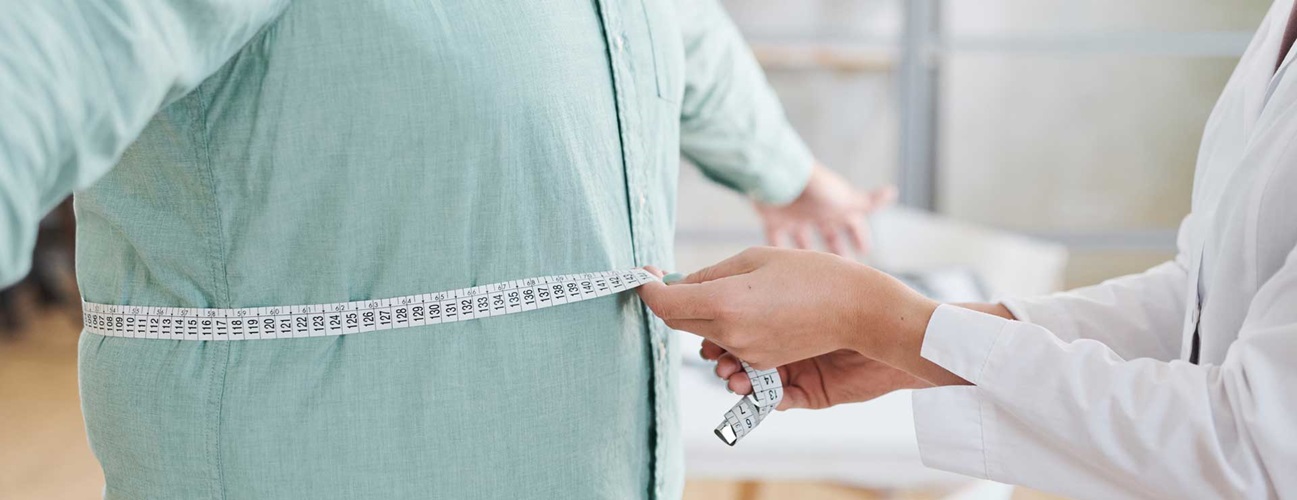Gastric Balloon for Weight Loss
The gastric balloon procedure is a temporary treatment for obesity that helps you lose weight by reducing the volume of your stomach without surgery.
What You Need to Know
- The deflated balloon is placed in the stomach by a doctor using an endoscope to insert the balloon through the mouth.
- The balloon is filled with saltwater and can stay in the stomach for six months. It is then removed.
- By decreasing the stomach volume, a gastric balloon can help people with obesity feel full with less food and gradually lose weight.
What is a gastric balloon?
A gastric balloon is a soft, smooth, durable balloon made of silicone rubber. It is designed to be placed in the stomach to reduce its capacity and help you feel full with less food.
The deflated balloon is inserted through the mouth and into the stomach by a doctor using an endoscope (a thin, flexible tube).
The balloon is then filled with saline solution (saltwater) to occupy space in the stomach, leaving less room for large amounts of food and drink. The idea is to help you feel full faster after eating smaller meals, and maintain that feeling of fullness longer so you are less hungry between meals.
Who may be a candidate for a stomach balloon?
A gastric balloon procedure may be a weight loss option for some adults who:
- Have a body mass index (BMI) of 30 to 40 — BMI reflects the relationship between a person’s weight and height. A BMI of 30 or above is a sign of obesity. The procedure may be recommended for people with a BMI higher or lower than 30 to 40 in some circumstances.
- Have not been able to lose weight with diet, lifestyle modifications and medications
- Prefer a less invasive alternative to anatomy-changing bariatric surgery
If your doctor recommends losing weight before a planned surgery, such as joint replacement, or to assist with fertility, a gastric balloon can help you achieve the desired weight in a relatively short period of time.
What happens during the gastric balloon procedure?
The minimally invasive, outpatient procedure to insert the gastric balloon with an endoscope takes about 15 to 20 minutes, and is performed in an endoscopy center.
To place the balloon in the stomach, the doctor uses a flexible, narrow tube-like camera device, equipped with lights, that is called an endoscope.
You are sedated, so you are very sleepy and comfortable. Once you are under sedation, you lie on your side while the doctor performs the procedure.
- The doctor inserts the endoscope into the mouth and carefully examines your esophagus, stomach and small bowel to ensure there is nothing that would make having a gastric balloon unsafe, such as a large hiatal hernia or stomach ulcer.
- If everything looks normal, a narrow tube called a catheter is inserted alongside the endoscope. The deflated balloon is attached to the end of the catheter.
- The endoscope guides the catheter through the esophagus and into the stomach.
- Once the balloon is in place, it is filled with saline through the catheter until the balloon is about the size of a grapefruit.
- The doctor uses the endoscope to detach the catheter from the balloon, which seals itself with a valve.
- The doctor withdraws the endoscope and catheter, leaving the filled balloon behind in the stomach.
Johns Hopkins Endoscopic Weight Loss Program
The team with the Endoscopic Weight Loss Program offers innovative weight loss procedures that do not require invasive surgery. We take a collaborative approach to obesity management that combines the expertise of many specialists, which helps us offer high-quality care and enable long-term weight loss.
Recovery from the Gastric Balloon Procedure
You will be able to go home as soon as the sedation wears off. Make sure someone can drive you.
You can resume all your normal activities without limitations, including showering, swimming and traveling by plane.
Gastric Balloon Side Effects and Complications
You may experience some nausea, vomiting or stomach cramping for a few days after the balloon is placed in your stomach. Your doctor will prescribe medications to help with these symptoms, which tend to go away in three to five days. Reflux or gastroesophageal reflux disease (GERD) symptoms can be worse after balloon placement but can be improved with a daily antacid medication such as a proton pump inhibitor (PPI). Most people with a gastric balloon do not notice the balloon after about a week.
Very rare complications from the gastric balloon include:
- Balloon deflation after it has been placed in the stomach, which can cause the balloon to move out of the stomach and block the intestines
- Perforation of the esophagus or stomach following balloon placement
- Spontaneous over-inflation of the balloon after placement due to unknown causes, requiring early removal
Losing Weight with a Gastric Balloon
For the first two weeks after gastric balloon insertion, you will be on a liquid diet, followed by a gradual transition to regular food. Your health care team will provide guidelines regarding diet restrictions.
You are likely to lose weight quickly, especially in the first three to four months of living with the gastric balloon. Typically, people lose about 10 to 15% of their body weight by the time the six-month program is complete.
The gastric balloon may be one part of a comprehensive weight loss approach. Your doctor may also recommend additional dietician, behavioral or medical therapy to support healthy diet and exercise habits long-term and to help prevent you from regaining weight after the balloon is taken out.
Gastric Balloon for Weight Loss: Lisa’s Story

In her 50s, Lisa was obese but ready to take control of her life and health. Lisa consulted with the Johns Hopkins Concierge Endoscopic Weight Loss Program and learned about the gastric balloon program. With the expertise and support of the weight loss team, Lisa changed her life, lost 80 pounds and gained improved health and wellness.
How is the gastric balloon removed?
The weight loss balloon is designed to stay in your stomach for six months. When you have completed the treatment program or when your doctor recommends, the balloon can be removed. This is a simple procedure that takes about 20 minutes and follows similar steps to placement of the balloon.
To remove a gastric balloon, the doctor will:
- Sedate you to make you comfortable
- Insert an endoscope into your stomach through the mouth
- Puncture the balloon and use a catheter to draw out the saline
- Use the endoscope to retrieve the deflated balloon







